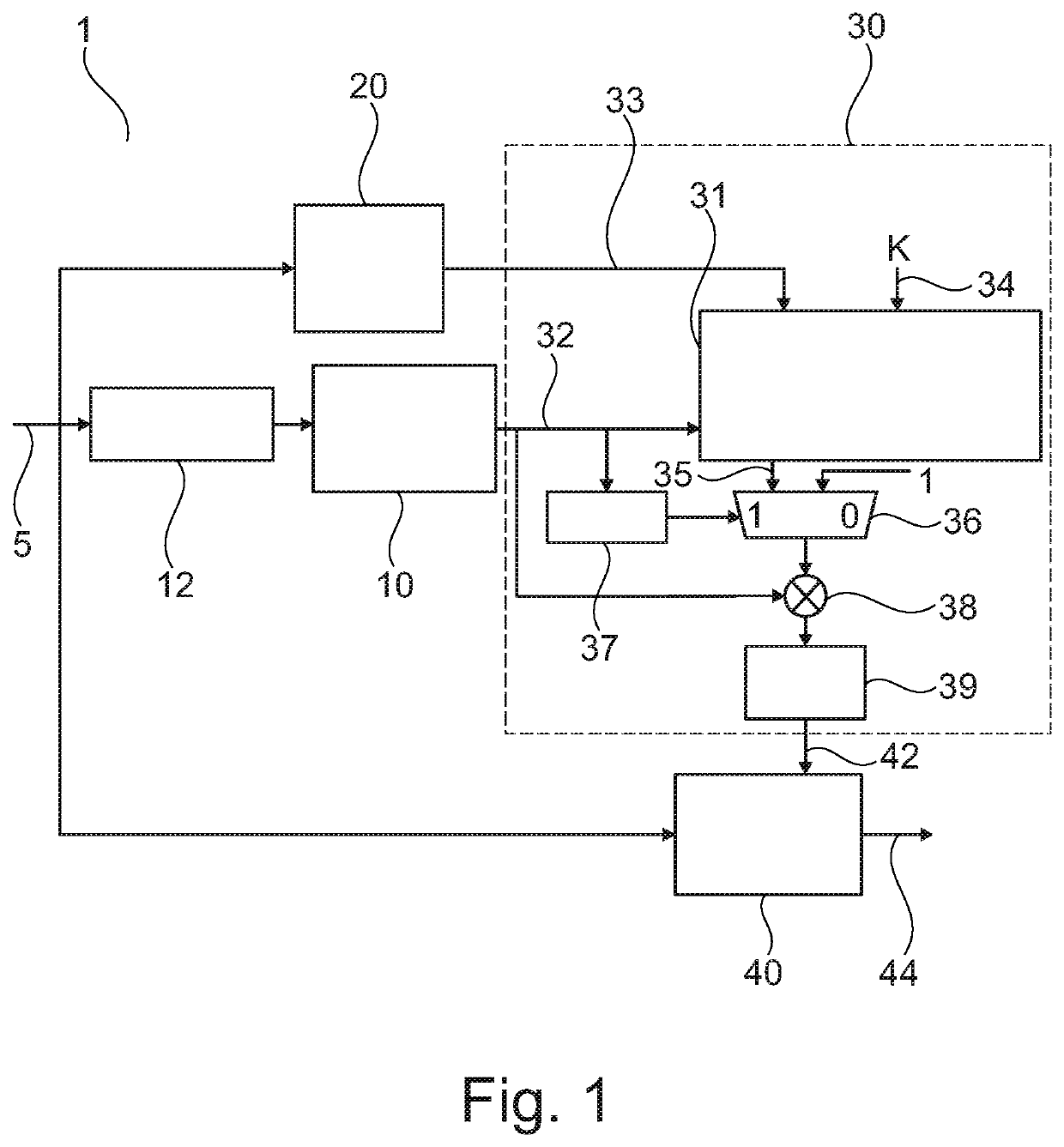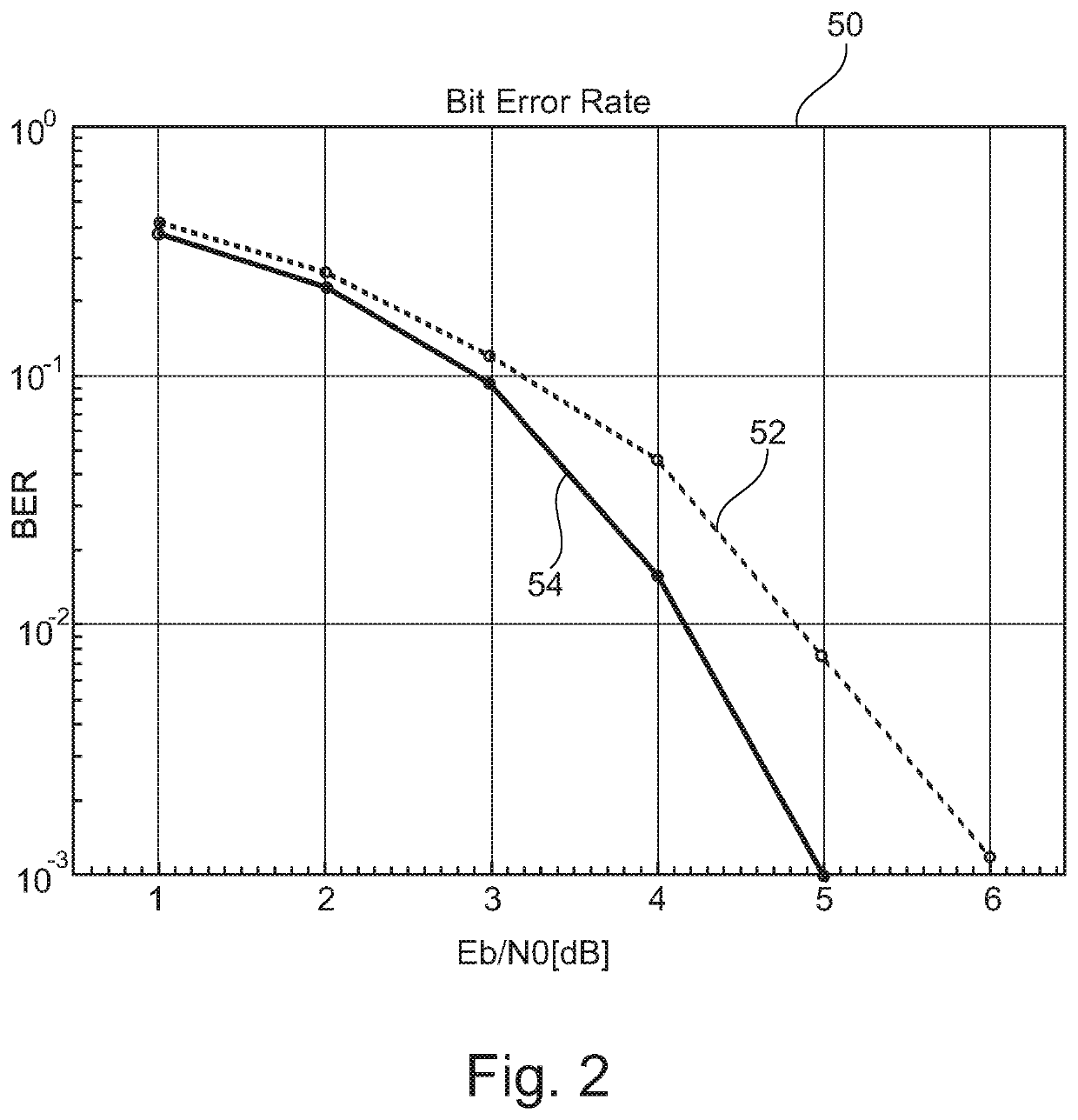Optimizing MRC coefficients for RAKE receiver for increasing SNR
a rake receiver and mrc coefficient technology, applied in the field of rake receivers, can solve the problems of not knowing the exact cir vector h at the receiver, not knowing the n in the practical receiver, and not maximizing the received snr
- Summary
- Abstract
- Description
- Claims
- Application Information
AI Technical Summary
Benefits of technology
Problems solved by technology
Method used
Image
Examples
Embodiment Construction
[0027]The illustration in the drawing is schematic. It is noted that in different figures, similar or identical elements are provided with the same reference signs or with reference signs, which differ only within the first digit.
[0028]FIG. 1 shows an UWB receiver 1 in accordance with an embodiment. More specifically, the receiver 1 comprises a data signal input 5, a channel estimation unit 10, a correlator 12, a noise variance estimating unit 20, a device 30 for determining MRC coefficients, and a RAKE receiver 40 having an MRC input 42 and a receiver output 44. The device 30 comprises a processing unit 31 coupled to receive an estimated channel impulse response vector 32 from the channel estimation unit 10, an estimated noise variance vector 33 from the noise variance estimating unit 20, and a predetermined scalar value K at input 34. The processing unit 31 is adapted to calculate multiplication factors (or a multiplication factor vector) based on the estimated channel impulse res...
PUM
 Login to View More
Login to View More Abstract
Description
Claims
Application Information
 Login to View More
Login to View More - R&D
- Intellectual Property
- Life Sciences
- Materials
- Tech Scout
- Unparalleled Data Quality
- Higher Quality Content
- 60% Fewer Hallucinations
Browse by: Latest US Patents, China's latest patents, Technical Efficacy Thesaurus, Application Domain, Technology Topic, Popular Technical Reports.
© 2025 PatSnap. All rights reserved.Legal|Privacy policy|Modern Slavery Act Transparency Statement|Sitemap|About US| Contact US: help@patsnap.com


